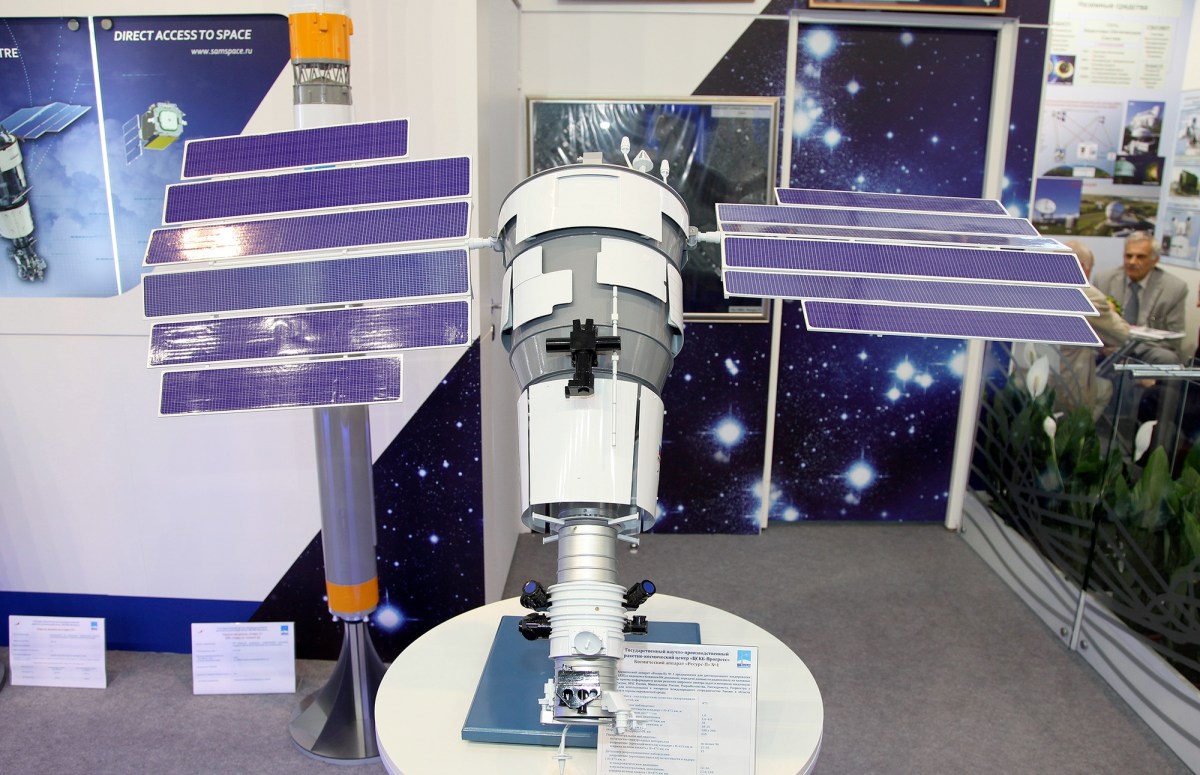WASHINGTON — A Russian satellite in low Earth orbit broke up June 26, creating more than 100 pieces of trackable debris and briefly causing the International Space Station crew to take shelter.
The satellite, Resurs P1, suffered some kind of event at around 12 p.m. Eastern June 26, U.S Space Command (USSPACECOM) said in a June 27 statement, creating more than 100 pieces of debris. The statement did not indicate any potential cause for the breakup.
“USSPACECOM has observed no immediate threats and is continuing to conduct routine conjunction assessments to support the safety and sustainability of the space domain,” it stated.
LeoLabs, the company that monitors low Earth orbit with a global network of radars, reported the event on social media late June 26, estimating the time of the breakup to be between 9:05 a.m. and 8:51 p.m. Eastern.
LeoLabs has detected a debris-generating event in Low Earth Orbit. Early indications are that a non-operational Russian spacecraft, Resurs P1 (SATNO 39186), released a number of fragments between 13:05 UTC 26 June and 00:51 UTC 27 June.
— LeoLabs (@LeoLabs_Space) June 27, 2024
A LeoLabs spokesperson said June 27 that the company was now tracking at least 180 objects from the event, a number that could increase. The spokesperson added that it was still too early to determine what caused the breakup.
The event appears to have caused the ISS crew to temporarily take shelter in spacecraft docked to the station. “Beginning around 8:45 p.m. EDT on Wednesday, June 26 NASA instructed crews aboard the space station to shelter in their respective spacecraft as a standard precautionary measure after it was informed of a satellite break-up at an altitude near the station’s earlier Wednesday,” NASA said in a statement. Mission control gave an all-clear to the crew about an hour later.
Resurs P1 is a defunct Russian Earth observation satellite weighing about 6,000 kilograms. Launched in 2013 into a sun-synchronous orbit, the spacecraft was decommissioned in late 2021 and its orbit was decaying. At the time of the incident, its altitude had decreased to about 355 kilometers, and the spacecraft was likely to reenter before the end of the year.
What caused the spacecraft to break up is not clear. The leading explanation is the spacecraft itself broke apart because it was not properly passivated at the end of its mission. Passivation involves removing sources of energy, such as draining batteries and venting tanks, that have been linked to past satellite breakups.
The spacecraft could have been hit by an untracked piece of debris. There has also been speculation that the spacecraft was hit by a Russian anti-satellite (ASAT) weapon in a test like that in November 2021, when a direct-ascent ASAT struck Cosmos 1408, creating nearly 1,800 pieces of tracked debris. However, there have been no statements by either the Defense Department or Russian Ministry of Defense about such a test, which likely would have been observed by American assets, and Russia did not file airspace restrictions associated with any potential launch site for an ASAT test at the time Resurs P1 broke up.
